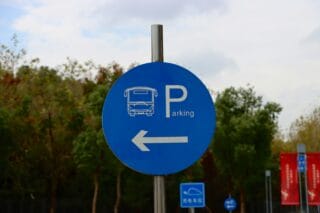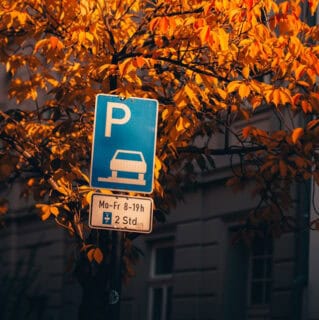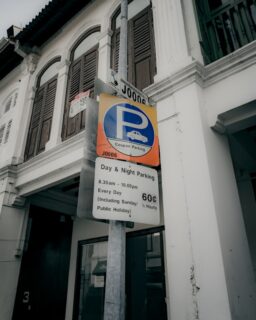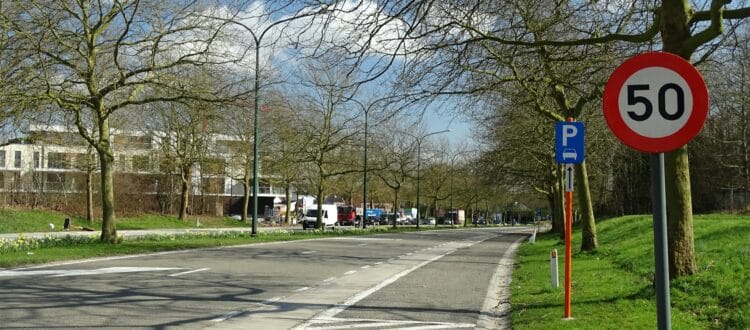Street parking signs are an essential part of urban infrastructure, guiding drivers on where and when they can park their vehicles along city streets. These signs serve as a crucial communication tool, conveying important information about parking regulations, time limits, and permit requirements to ensure orderly and efficient use of limited curbside space.
Whether indicating metered parking, resident permit zones, loading zones, or temporary restrictions, they play a pivotal role in maintaining traffic flow and preventing congestion in bustling urban areas. Understanding the significance of these signs is vital for both residents and visitors to navigate the complex web of parking regulations and avoid potential fines or towing.
Who Regulates Street Parking Signs?
 Regulation of street parking signs is often managed by local government authorities, such as city councils or municipal transportation departments. These entities are responsible for establishing and enforcing parking regulations to ensure the safe and efficient use of public roadways – and most public area street parking signs will conform to the FHWA’s MUTCD guide.
Regulation of street parking signs is often managed by local government authorities, such as city councils or municipal transportation departments. These entities are responsible for establishing and enforcing parking regulations to ensure the safe and efficient use of public roadways – and most public area street parking signs will conform to the FHWA’s MUTCD guide.
In some cases, specific parking authorities or commissions may be tasked with overseeing parking signage and regulations within a particular city or region. These regulatory bodies work to create and maintain a clear and standardized system of street parking signs, providing drivers with essential information about parking restrictions, time limits, and permit requirements. By efficiently managing street parking signage, these authorities aim to enhance traffic flow, reduce congestion, and promote equitable access to parking spaces for residents and visitors alike.
What Material are Street Parking Signs Made of?
They are predominantly made from aluminum due to its durability, versatility, and resistance to environmental factors. Aluminum is favored for its long lifespan and ability to maintain high reflectivity, especially when anodized or anodized. The most commonly used aluminum alloy for traffic signs is 5052-H38, chosen for its high tensile strength, although other alloys like 5052-H36, 3004-H38, 3105-H18, and 6061-T6 are also popular. These signs are most often 0.080” thick, providing an optimal balance of sturdiness and resilience against impacts. Aluminum’s lightweight nature makes it cost-effective to transport and handle, and its recyclability aligns with eco-friendly practices.
To enhance nighttime and low-light visibility, street parking signs typically incorporate retroreflective sheeting, available in engineering grade, high intensity prismatic, and diamond grade, each offering different levels of reflectivity suitable for various conditions and locations. This combination of material properties and reflective technologies ensures that street parking signs are both effective in communication and sustainable in design.
Do Street Parking Signs Need to be MUTCD-Compliant?
 They are generally required to be MUTCD (Manual on Uniform Traffic Control Devices) compliant in the United States, as the MUTCD sets the standard for traffic signs, signals, and pavement markings to ensure consistency and safety across the nation’s roadways. Compliance with MUTCD guidelines is crucial for street parking signs to effectively communicate parking regulations, restrictions, and other essential information to drivers in a clear and standardized manner.
They are generally required to be MUTCD (Manual on Uniform Traffic Control Devices) compliant in the United States, as the MUTCD sets the standard for traffic signs, signals, and pavement markings to ensure consistency and safety across the nation’s roadways. Compliance with MUTCD guidelines is crucial for street parking signs to effectively communicate parking regulations, restrictions, and other essential information to drivers in a clear and standardized manner.
By adhering to MUTCD standards, street parking signs will maintain uniformity in design, layout, and color schemes, enhancing their visibility and readability for all road users. Also, MUTCD-compliant signs contribute to the overall safety and efficiency of the transportation network by promoting consistent and recognizable traffic control devices. Therefore, it is essential for street parking signs to meet MUTCD requirements to support a cohesive and well-regulated parking system within cities and communities.
Standard Rules and Regulations When it Comes to Street Parking Signs
Standard rules and regulations for street parking signs are designed to ensure the safe and efficient use of public roadways, providing equitable access for all motorists. Parking signs communicate various restrictions and requirements, such as time limits, payment obligations, and specific zones like loading areas or clearways. For instance, loading zones are typically reserved for commercial vehicles for a set duration, often 30 to 60 minutes, to facilitate quick loading and unloading activities. No Stopping zones are strictly enforced, prohibiting vehicles from stopping for any reason or duration.
Similarly, clearways are implemented to improve traffic flow during peak times, and stopping is not allowed during the hours specified on the sign. Motorists must also adhere to the direction of travel when parking on two-way roads. Also, it is important to avoid obstructing driveways, footpaths, bicycle paths, and nature strips, as well as adhering to any yellow line restrictions that indicate no stopping zones.
Are Street Parking Signs Required to be Reflective?
Street parking signs are typically required to be reflective to ensure visibility during nighttime and low-light conditions. This requirement is outlined in Sections 2A.21 and 2A.22 of the 11th Edition of the Manual on Uniform Traffic Control Devices (MUTCD). While there is no specific compliance date for sign replacement, signs that fall below the minimum established retro-reflectivity levels are considered to have exhausted their useful service life and should be prioritized for replacement.
 This is particularly important for safety reasons, as retro-reflectivity is crucial for providing visual cues to drivers during the night, which are otherwise provided by daylight features such as shoulders, pavement markings, and roadside structures. Retroreflective materials used on traffic signs, which include tiny glass beads or microprismatic patterns, efficiently redirect light back to its source, enhancing the sign’s visibility.
This is particularly important for safety reasons, as retro-reflectivity is crucial for providing visual cues to drivers during the night, which are otherwise provided by daylight features such as shoulders, pavement markings, and roadside structures. Retroreflective materials used on traffic signs, which include tiny glass beads or microprismatic patterns, efficiently redirect light back to its source, enhancing the sign’s visibility.
Agencies are responsible for assessing and managing the retro-reflectivity of their signs, and although there is no federal mandate on how often to conduct inspections, they must ensure that their signs meet the minimum standards to avoid potential tort liability. Even private roads open to public travel are required to adhere to these standards. The implementation of retroreflective technology in street parking signs is a critical aspect of road safety, ensuring that drivers can see and comply with parking regulations regardless of the time of day.
Can You Customize Street Parking Signs?
Yes, street parking signs can be customized to meet specific needs and requirements, while remaining MUTCD compliant. Whether it’s for a residential area, commercial property, or public parking lot, customizing street parking signs allows for tailored messaging, branding, and regulatory information. Companies specializing in custom signage, such as Visigraph, offer a range of options, including various sizes, materials, and design choices.
Customization may involve adding specific text, logos, directional instructions, or unique parking regulations to the signs. This level of personalization not only helps in communicating clear and relevant information to drivers but also contributes to the overall aesthetics of the parking area. Also, custom parking signs can help reinforce branding and enhance the professional appearance of a property, making them a valuable asset for businesses and organizations looking to create a distinct and organized parking environment.
How Long Do Street Parking Signs Last?
They are designed to withstand outdoor conditions and have a long lifespan. The durability of street parking signs depends on various factors such as the materials used, exposure to weather elements, and the level of maintenance. These signs are often made from aluminum or reflective aluminum are known for their longevity and resistance to rust and corrosion, making them suitable for prolonged outdoor use. With proper care and periodic inspection for wear and tear, street parking signs can last anywhere from 7 to 10 years or longer, ensuring that they continue to effectively convey important parking regulations and information to drivers and pedestrians.
Conclusion
Street parking signs are crucial elements of urban and suburban landscapes, serving to regulate parking, ensure safety, and communicate essential information to drivers and pedestrians. The durability and longevity of street parking signs, often constructed from materials like aluminum or reflective aluminum, contribute to their ability to withstand outdoor conditions and effectively convey parking regulations for several years. They are indispensable tools for managing parking spaces, promoting safety, and facilitating the smooth flow of traffic in urban and commercial environments.
Popular Posts:




